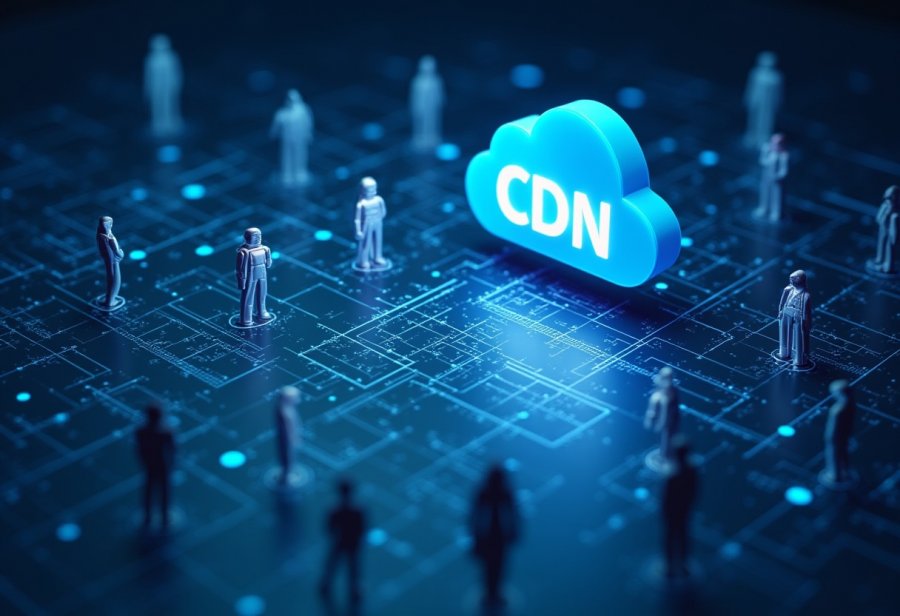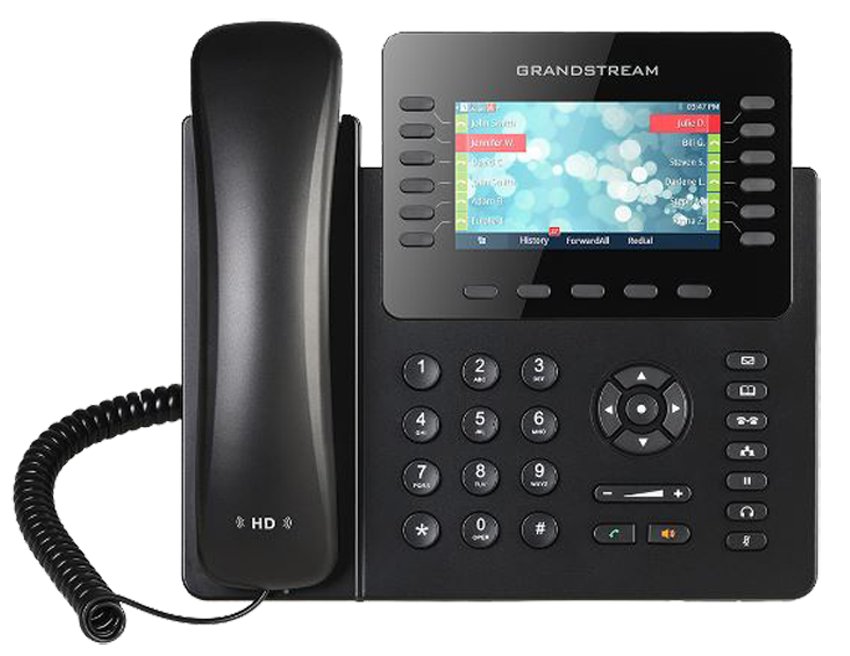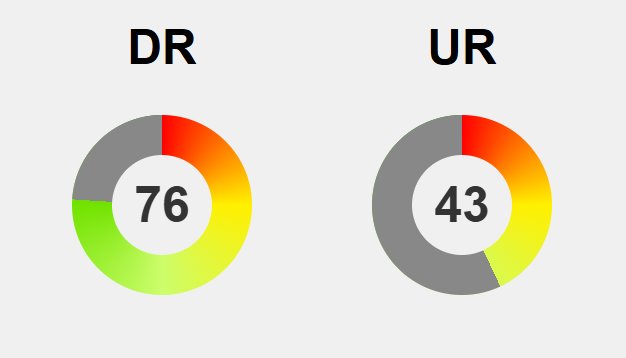Imagine transforming your website into a lightning-fast, ultra-secure platform—yet, why do so many sites still hesitate to adopt this game-changing technology? Content Delivery Networks (CDNs) promise speed, reliability, and security by caching assets close to users worldwide, but understanding their core principles and optimization strategies reveals a complex, evolving landscape. From strategic cache management to intelligent routing and layered security features, implementing a CDN requires careful planning and ongoing refinement. As digital demands accelerate, innovations like edge computing and AI-driven threat detection are poised to reshape content delivery, creating personalized, real-time experiences at scale. But with rapid technological advances come new challenges: managing sophisticated features, navigating regulations, and maintaining agility. Is your website prepared to leverage these future-forward capabilities and stay ahead in a crowded, competitive environment? Embracing CDN technology today is more than an upgrade—it’s a strategic necessity for sustained growth and resilience.

Unlocking Website Speed and Security Through CDN Technology
A Content Delivery Network (CDN) is a strategically distributed network of servers designed to optimize the delivery of web content across the globe. Instead of relying solely on a single, centralized server, a CDN caches copies of your website’s static assets—such as images, videos, stylesheets, and scripts—across multiple locations worldwide. When a visitor accesses your site, their request is automatically routed to the nearest edge server, dramatically reducing the physical distance data must travel. This proximity results in faster load times, lower latency, and an overall smoother browsing experience, regardless of where your users are located.
The primary advantage of a CDN lies in its ability to enhance website performance through intelligent caching and efficient routing. By storing static assets closer to users, a CDN minimizes the time required to fetch data, which is critical for keeping visitors engaged and reducing bounce rates. Effective cache management ensures that assets are refreshed regularly, maintaining content accuracy without sacrificing speed. This balance prevents users from receiving outdated information while still delivering the rapid response times that are vital for competitive online presence.
Beyond speed, CDNs serve as a robust security layer. They help protect websites from malicious traffic and cyberattacks by filtering out harmful requests before they reach your primary server. Distributing traffic across multiple nodes not only alleviates server load during traffic spikes but also mitigates the risk of Distributed Denial of Service (DDoS) attacks that aim to overwhelm your infrastructure. Many CDN providers incorporate advanced security features such as SSL/TLS encryption, Web Application Firewalls (WAFs), and real-time threat detection, which help secure sensitive data and foster user trust.
Implementing a CDN involves strategic planning and technical setup. It begins with selecting a provider that matches your geographic reach, security needs, and budget constraints. Once chosen, the process typically involves updating your DNS records—replacing your domain’s A or CNAME records with the CDN’s endpoints. This switch reroutes user requests through the CDN network, enabling edge servers to cache and serve your content efficiently. Enabling SSL certificates during this phase is essential for ensuring secure data transmission, especially if your website handles sensitive or financial information.
After configuring your CDN, thorough testing across various regions is crucial. Simulate access from different parts of the world to verify that pages load swiftly and that static assets are correctly cached and delivered. It’s important to confirm that content updates are reflected promptly and that security features function as intended. Proper testing ensures your deployment provides a consistent, high-quality experience for all users, setting a solid foundation for ongoing performance and security.
Once live, continuous monitoring and optimization are key to maximizing the benefits of your CDN. Analytics dashboards offered by most providers give insights into response times, cache hit ratios, and security alerts. Regularly reviewing this data allows you to fine-tune cache expiration policies, adjust routing strategies, and identify regions or assets that may need additional attention. Proactive management helps prevent issues before they impact user experience and allows your website to adapt seamlessly to changing traffic patterns and security threats.
In essence, a well-implemented CDN transforms your website into a faster, more secure, and more reliable platform. It acts as both a speed enhancer and a security shield, ensuring your content reaches users swiftly and safely, no matter where they are. By reducing latency, offloading traffic from your origin server, and providing advanced security features, a CDN becomes a strategic asset that supports your long-term growth and competitiveness in today’s digital landscape. Mastering its deployment and ongoing management is vital for delivering the high-performance online experience your audience expects and deserves.
Core Principles That Power CDN Performance and Protection
Building on the foundational understanding of CDN technology, the core principles that govern its performance and security are essential for unlocking its full potential. At the heart of a CDN’s effectiveness lie two interconnected mechanisms: intelligent caching and optimized routing. Caching involves strategically storing static assets—such as images, stylesheets, videos, and scripts—closely aligned with user locations. By doing so, the CDN minimizes the distance data must travel, drastically reducing load times and latency. Proper cache management ensures that content remains fresh and relevant; setting appropriate expiration policies and employing cache purging when necessary prevents the delivery of outdated information while maintaining speed. This careful balance is vital to delivering a seamless user experience without sacrificing content accuracy.
Equally critical is the role of advanced routing algorithms that direct user requests to the most responsive and least congested server nodes. Techniques like latency-based routing and Anycast enable real-time analysis of network conditions, allowing traffic to be dynamically steered toward the optimal edge server. This reduces response delays, especially during peak traffic periods, ensuring rapid content delivery. When combined with geo-targeting capabilities, these routing strategies facilitate regional customization, creating personalized experiences that enhance engagement and satisfaction. The synergy between caching and routing not only accelerates load times but also enhances overall reliability, making the website resilient to traffic surges and network disruptions.
Security features embedded within modern CDNs serve as the digital equivalent of a sturdy shield. As the first point of contact for incoming traffic, CDNs filter malicious requests, significantly mitigating threats such as Distributed Denial of Service (DDoS) attacks. By distributing traffic across multiple nodes, they dilute the impact of attack vectors and prevent overloads that could take down your site. Many providers integrate Web Application Firewalls (WAFs) and SSL/TLS encryption, establishing layered defenses that protect sensitive data and prevent common vulnerabilities like SQL injection or cross-site scripting. These security measures not only safeguard your digital assets but also build trust with users, who increasingly prioritize online safety.
Understanding the impact of latency and cache control is crucial for maximizing CDN performance. Latency—the delay experienced as data moves between server and user—directly influences user experience and conversion rates. The goal is to minimize this delay by deploying strategically positioned edge servers and implementing intelligent routing. Cache control policies determine how long assets are stored on edge nodes before refreshing; setting these policies thoughtfully ensures that users receive up-to-date content without unnecessary fetches from the origin server. Fine-tuning cache expiration times and purge protocols prevents serving stale information, reducing bandwidth consumption and response times while maintaining content relevance.
Maintaining high security standards requires ongoing vigilance and management. Regular monitoring of threat detection systems and security logs helps identify emerging vulnerabilities and attack patterns. Many CDN platforms offer automated tools that adapt to evolving cyber threats, updating filtering rules in real time. Enabling SSL/TLS and other security features consistently ensures the encryption of data exchanges, reinforcing compliance and user confidence. Continuous review and adjustment of security configurations are essential to keep pace with the sophistication of cyber adversaries. When security is integrated into routine performance assessments, the CDN becomes a proactive defender—ensuring your website remains fast, secure, and resilient against an ever-changing landscape of digital threats.

Advanced Strategies to Maximize CDN Efficiency and Security
Maximizing the benefits of a CDN involves strategic technical fine-tuning that elevates performance and security to new heights. Central to this effort is the mastery of cache management. Static assets like images, videos, stylesheets, and scripts should be cached aggressively to ensure rapid delivery, but dynamic content demands a more nuanced approach. Implementing precise cache-control headers allows you to specify which assets should be stored and for how long, striking a balance between speed and content freshness. Regularly reviewing and adjusting expiration policies prevents outdated information from slipping through, which can erode user trust, while also avoiding unnecessary fetches from the origin server that slow down load times and increase bandwidth costs. This careful calibration ensures your website remains both fast and accurate, even during frequent updates.
Beyond caching, intelligent routing algorithms play a pivotal role in optimizing CDN performance. Techniques such as latency-based routing and Anycast direct user requests to the most responsive and least congested server nodes in real time. These algorithms analyze network conditions continuously, dynamically steering traffic for minimal response delays. When combined with geo-targeting capabilities, routing can also facilitate regional content customization, creating a personalized experience that boosts engagement and satisfaction. This synergy of precise cache control and smart routing minimizes latency and ensures your website can handle traffic spikes seamlessly, maintaining stability and high responsiveness regardless of user location or demand surges.
Security integration within modern CDNs amplifies their performance advantages by providing layered defenses against cyber threats. Web Application Firewalls (WAFs) detect and block malicious traffic before it reaches your origin server, effectively preventing common attacks like SQL injections and cross-site scripting. DDoS mitigation features distribute incoming traffic across multiple nodes, diluting attack volume and maintaining site availability even during large-scale assault attempts. Enabling SSL/TLS encryption not only secures data exchanges but also enhances your search engine ranking, blending security with visibility. When these security features are configured correctly and monitored continuously, they serve as a resilient shield that safeguards your digital assets without compromising speed or user experience.
Monitoring and analytics are essential to sustain and refine your CDN’s performance. By leveraging detailed dashboards from your provider, you gain real-time insights into response times, cache hit ratios, server health, and security alerts. Analyzing these metrics reveals bottlenecks—be it regions with higher latency or assets that aren’t caching effectively—and provides actionable data to optimize your setup. Adjustments to cache expiration policies, routing rules, and content distribution strategies become more precise, ensuring your CDN adapts to changing traffic patterns and emerging threats. Automating routine tasks like cache purging and security rule updates further streamlines management, enabling your team to focus on strategic improvements that enhance speed, security, and reliability.
Managing a CDN effectively is an ongoing process that demands vigilance and adaptation. As your website’s audience grows and behaviors evolve, so should your configuration. Staying abreast of new features, security updates, and best practices from your provider allows you to leverage innovations such as AI-driven threat detection or edge computing. Regular performance audits help identify regions with higher latency or assets that aren’t caching optimally, guiding targeted adjustments. Automating maintenance tasks reduces manual effort and error, ensuring your infrastructure remains resilient and responsive. This proactive approach transforms a static deployment into a dynamic asset—one that continuously delivers fast, secure, and reliable content, positioning your site for sustained success in an increasingly competitive digital environment.
By staying proactive and leveraging advanced CDN management techniques, you can ensure your website remains competitive and secure. For more insights on optimizing your CDN setup, consider exploring how CDN optimization strategies can further enhance your site’s performance and protection.
Step-by-Step Guide to Selecting, Configuring, and Optimizing Your CDN
Implementing a CDN effectively begins with a thorough assessment of your website’s specific performance needs and the assets that will benefit most from distribution. Start by identifying static content such as images, videos, stylesheets, and scripts—assets that are frequently requested and can be cached for rapid delivery. For dynamic content, which changes regularly or is personalized for each user, develop a tailored approach with precise cache control policies. Understanding your content profile guides you in selecting a CDN provider that aligns with your geographic reach, security requirements, and budget constraints. Look for platforms offering extensive global coverage, robust security features, and straightforward integration options. Comparing providers based on performance metrics, scalability, and ease of management ensures you partner with a solution capable of supporting your long-term growth.
Once you’ve chosen the right CDN provider, configuring your DNS settings is the next critical step. Typically, this involves updating your domain’s A record or CNAME to point to the CDN’s endpoints. This change reroutes your incoming traffic through the CDN network, allowing edge servers to cache and serve your content efficiently. Enabling SSL certificates during this process is essential to maintain secure data transmission, especially if your website handles sensitive or transactional information. Proper SSL setup not only encrypts data but also boosts your search engine ranking, reinforcing both security and visibility. After updating DNS records, allow time for propagation—usually a few hours—and then proceed with comprehensive testing across multiple regions and devices. Use tools like WebPageTest or Pingdom to verify that your site loads faster globally and that static assets are correctly cached, providing a seamless experience for your users.
Thorough testing before going live is vital to prevent surprises and ensure your CDN deployment meets expectations. Simulate user access from various locations worldwide to confirm that pages load swiftly and consistently. Check that static assets such as images, stylesheets, and scripts are being served from cache, reducing load times significantly. Verify that dynamic content updates are reflected accurately and promptly. Confirm SSL certificates are functioning correctly and that there are no broken links or missing assets. During this phase, pay close attention to response times and cache hit ratios. Adjust cache expiration policies if necessary to optimize the balance between speed and content freshness. A meticulous testing process guarantees your setup delivers the high performance and security standards your audience demands.
After launching your CDN, continuous monitoring and refinement become essential to maximize its benefits. Leverage the analytics dashboards provided by your CDN platform to track response times, cache hit ratios, server health, and security alerts. Analyzing this data reveals bottlenecks—such as regions with higher latency or assets that are not caching as intended—and provides actionable insights. Use these insights to fine-tune cache expiration policies, adjusting how long assets are stored to keep content fresh without sacrificing speed. Optimize routing rules to direct traffic through the most responsive nodes, especially during peak periods or traffic spikes. Regularly review security logs and threat detection reports to identify vulnerabilities or attack patterns, enabling you to update security configurations proactively. Automating routine tasks like cache purging and security rule updates streamlines management and reduces human error, ensuring your CDN remains effective and resilient.
Maintaining an optimal CDN setup requires ongoing attention and adaptation. As your website’s audience grows and traffic patterns evolve, revisit your configurations periodically. Stay informed about new features, security enhancements, and best practices from your provider—such as AI-driven threat detection or edge computing capabilities—and incorporate these innovations. Conduct regular performance audits to identify regions with elevated latency or assets that are not caching efficiently. Use this data to refine cache policies and routing strategies further, ensuring your content delivery remains swift and reliable. Automate routine maintenance tasks such as scheduled cache purges, security updates, and configuration adjustments to reduce manual effort and minimize errors. This proactive, strategic management transforms your CDN into a dynamic asset capable of supporting sustained growth, security, and high performance amid an ever-changing digital landscape.
Implementing a CDN isn’t a one-time event but a continuous process of optimization and improvement. As your digital ecosystem expands, scaling your CDN setup becomes essential. Consider deploying serverless edge functions that enable real-time content customization, personalization, and performance enhancements without adding latency. These functions allow you to serve tailored experiences, run A/B tests, or respond to security threats immediately at the network edge. Regularly update your cache policies to reflect new content or changing user behaviors, and leverage AI-driven analytics to anticipate and adapt to emerging trends. Keep your security measures current by applying patches, updating rules, and monitoring threat intelligence feeds. Automate these tasks where possible to free resources for strategic initiatives. By embracing this iterative approach, you ensure your CDN remains a high-speed, secure, and adaptable backbone supporting your website’s competitive edge in a rapidly evolving environment.

Future Trends and Insights Shaping the Next Generation of CDN Innovation
As digital landscapes continue to evolve at an unprecedented pace, the strategic importance of CDN technology is set to grow even more significant. Emerging innovations such as edge computing are transforming how content is delivered, enabling data processing closer to users and drastically reducing latency. This shift opens new avenues for delivering personalized experiences, integrating Internet of Things (IoT) devices, and conducting real-time analytics with minimal delay. Websites will not only load faster but will dynamically adapt to user behaviors and preferences, creating more engaging, responsive digital environments that meet the increasing expectations of today’s connected consumers.
Security within CDN ecosystems is also advancing rapidly. Modern CDNs are embedding sophisticated, AI-driven threat detection and automated mitigation systems that proactively defend against cyberattacks before they can impact your site. These intelligent defenses analyze traffic patterns, identify anomalies, and respond instantly, fortifying websites against complex threats like zero-day vulnerabilities and advanced DDoS campaigns. As cyber threats continue to evolve in complexity and scale, these intelligent security layers will become essential components of any resilient digital infrastructure, providing peace of mind while maintaining optimal performance.
The architecture of CDNs is shifting toward smarter, more decentralized networks that leverage serverless edge functions. These capabilities allow for real-time content customization, personalized delivery, and on-the-fly A/B testing without compromising speed. Businesses can serve highly tailored content at scale, enabling rapid experimentation and adaptation in response to market trends or user feedback. This edge computing paradigm facilitates a seamless, highly personalized user experience, reinforcing brand loyalty and engagement while maintaining the high standards of speed and security critical in today’s competitive online environment.
Artificial intelligence and machine learning are poised to revolutionize CDN performance further. By continuously analyzing user interactions and network conditions, these technologies enable predictive caching, adaptive routing, and dynamic content optimization. This means websites will anticipate user needs, reduce delays before they occur, and deliver content more efficiently—even during traffic spikes or regional outages. For organizations, this translates into higher customer satisfaction, increased conversions, and stronger competitive positioning. Investing in these advanced capabilities now positions businesses to capitalize on future digital innovations and stay ahead of the curve.
While these technological advances promise substantial benefits, they also introduce new challenges. Deploying and managing sophisticated CDN features requires specialized expertise, which can be a hurdle for smaller organizations without dedicated technical teams. Additionally, navigating the complexities of regional compliance, data sovereignty laws, and evolving privacy regulations demands strategic planning and flexibility. Addressing these hurdles involves selecting providers with comprehensive support, adopting flexible architectures, and fostering a proactive mindset toward continuous learning and adaptation. By doing so, organizations can harness the full potential of next-generation CDN capabilities, transforming their digital infrastructure into a resilient, high-performing backbone that supports sustained growth, innovation, and security in an increasingly interconnected world.
Looking ahead, the role of CDN technology will be pivotal in shaping the future of digital engagement. As the demand for faster, more secure, and highly personalized online experiences intensifies, CDNs will evolve beyond mere content delivery tools into integrated platforms for edge computing, security, and real-time analytics. Embracing these developments today ensures your website remains agile, resilient, and competitive in a landscape where speed and security are non-negotiable. Building this future-proof infrastructure now not only enhances current performance but also lays the foundation for ongoing innovation, enabling your digital ecosystem to adapt seamlessly to new technologies, market shifts, and user expectations. Staying at the forefront of CDN advancements is no longer optional; it is essential for maintaining relevance and delivering exceptional value in an ever-accelerating digital economy.






